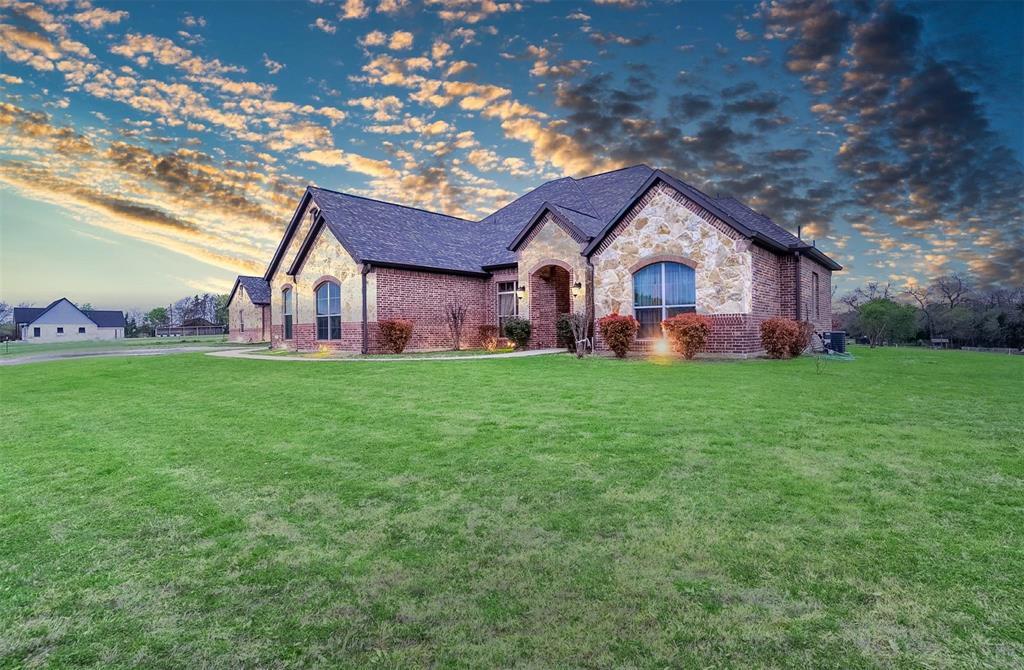A family compound may offer the right living arrangement for you and your extended family. It can bring families together and ensure that you’ve always got support. Yet, starting a family compound also involves a lot of work.

Learn more about the process and main considerations on how to start a family compound before jumping into it.

What Is a Family Compound?
Basically, a family compound is a property with space for multiple households. It’s traditionally used to house multiple generations.
You and your family may live in one unit while your in-laws, parents, or other extended family live in another.
This arrangement allows the family to live closer. Yet, you still retain some of your privacy. You live in separate units on the same property.
Steps on How to Start a Family Compound
Starting a compound requires a lot of planning, no matter how you decide to do it.
Your options include building a compound, buying an existing one, or converting a large property to suit your needs.
Each choice requires you to set a budget, purchase land, and consider a long list of details. The general steps involved in how to start a family compound include:
- Initial planning
- Budgeting and financing
- Site selection
- Design and layout
- Construction
- Infrastructure and utilities
- Legal structure and estate planning
Initial Planning
Define your vision. Think about the reasons why you want to start a family compound.
You may like the idea of living next to your extended family. It brings your family closer. The shared resources and ability to accommodate retired family members are also common reasons for building or buying a compound.
Determine how many people will live on your compound. People often start compounds with close family such as parents and in-laws.
Figuring out how many people are going to stay on the property helps determine your housing needs.
You should also discuss living arrangements. Does everyone plan on living on the property year-round? Or do they plan to visit periodically throughout the year, using the compound as a vacation destination?
If some members of your family choose to live on the compound part-time, you may not need as many housing units.
What amenities and features do you want? Discuss these details with your family members to get a better sense of what everyone wants.
Compounds often have communal areas for gardens, sports, and other interests. Some properties span multiple acres, providing plenty of land to spread out and enjoy different outdoor activities.
You may also want enough space for farming. Growing crops requires lots of land.
Get your family involved and discuss expectations. Ensuring everyone agrees on the details of the project can prevent future misunderstandings.
Budgeting and Financing
As part of these initial discussions, your family group should set a budget. Decide how much you plan to spend to develop your compound.

Be realistic about the potential cost. Along with construction, you need to pay for land, designs, and other expenses.
You can find rural properties with single-family homes, providing a starting point for your compound. Yet, the cost of new construction for additional dwellings should also be included.
In most cases, you’ll need a loan to complete your project. Explore your financing options, such as traditional home loans and construction loans.

Site Selection
Searching for the best spot for your compound is one of the most important steps. It’s something that you can’t change later.
In most cases, you’ll need to look in rural areas. Urban areas are less likely to allow multi-unit dwellings or offer space for them.
Some of the details to consider include:
- Proximity to amenities
- Overall accessibility
- The size and shape of the land
- Topography
Find a spot that works for everyone. Look for properties near places you need to travel frequently, such as work or school.
It should also have good access to roads or highways, which may become more important as you search further for a suitable lot.
When you find a potential property, inspect its characteristics. Consider the size and topography – which refers to the terrain and features.
Make sure that the land can support the infrastructure you plan to build and any agricultural or recreational activities you want.
Design and Layout
Hire an experienced architect to design the layout of the family compound. Consider incorporating:
- Multiple living units for privacy
- Communal spaces for gatherings
- Recreational facilities (e.g., pool, tennis court)
- Gardens and outdoor areas
Design the compound while leaving room for expansion. Don’t use all the space at once.
More families may join you on the compound. You may eventually need more living areas, making it important to retain some space for future growth.
Construction Process
Building a compound may require the construction of one or more homes, making this a major project. Take the time to choose a skilled contractor. If possible, look for a company with experience building residential compounds.
Get quotes from several companies. Check their references and learn more about them to make the right pick.
The construction process has several phases as well:
- Site prep
- Foundation
- Framing
- Utilities
- Exterior and interior finishing
During site preparation, workers clear the land and level the ground before starting on the foundation and framing. This is followed by the roofing, siding, and insulation.
Plumbing, electrical systems, and other utilities are added next. Interior finishes, including drywall, flooring, and fixtures, are the last steps.
Regularly inspect the work throughout each of these steps. Look for any issues that stand out, such as work that doesn’t follow the plan.
Address any issues as they occur, instead of dealing with them afterward. This saves time and prevents waste.
Permits
You need permits for most of the construction work. The contractors usually take care of this step.
Yet, requirements and practices vary. Talk with your contractor. Determine you need to get the permits yourself to avoid trouble later.
You may require separate permits for constructing a home, adding on to a home, electrical work, plumbing, and any other major step involved in the build process.
Zoning
Find out if the property is zoned for multiple dwellings. Rezoning may be necessary in some cases.
Certain regions also have environmental regulations. This may cover land use, water usage, and waste management.
Any mistakes could result in fines or the need to redo the work.
Again, your contractors can help in this area. They should be able to address any zoning problems or regulations.
Infrastructure and Utilities
Every compound needs water and other utilities. Your property may connect to a local water supply or rely on a well and a septic tank.
Your property also needs access to electricity. This typically involves connecting to the local grid.
You could also look at sustainable solutions. For example, you could add solar panels or even wind turbines.
These options can reduce ongoing costs and your family’s environmental impact.

Legal Structure and Estate Planning
Decide on the legal structure for the compound. With multiple families on the same property, you have several options for ownership.
Work with your family to figure out who legally owns it. Possible legal arrangements include:
- Joint ownership by all family
- Family trust
- Limited liability company (LLC)
Joint ownership is a common choice and the most straightforward initially. Yet, establishing a trust or an LLC also comes with certain advantages.
Trusts and LLCs help protect assets from creditors and legal claims. Both options can also provide tax benefits. Talk with an attorney and explore these options in more detail.
Attorneys are also available for estate planning for family compounds. Creating an estate plan allows you to pass the compound down to future generations. You can include provisions for management, maintenance, and succession.
Homesteading Your Family Compound
Homesteading can increase your family’s self-sufficiency. Tending to vegetable gardens, orchards, and livestock are good examples of homesteading practices.
This helps your family become more self-sufficient, but also comes with a few common challenges.
Use these tips to deal with the obstacles that come with compound living.
Develop Skills
Homesteading requires specific skills and knowledge. If everyone participates, you can get more done.
Encourage family members to learn more about gardening or food preservation. Improve your family’s sustainability and reduce reliance on external resources.
Promote Community
Take steps to help promote a greater sense of community. Consider organizing regular family gatherings, meals, and activities. Be sure to take advantage of communal spaces to strengthen your relationships.
Lifestyle Suggestions
Consider how you want to use your land. Your family may enjoy the outdoors, cultural traditions, and other group activities.
These details can help you decide on the features to include on your compound, such as a garden, hiking paths, or even a basketball court.
Good Communication
Living near family can lead to conflicts. Establish clear communication to address issues promptly.
Discuss and agree on the main goals. Decide what you want most from your compound.
Common goals include spending more time together, saving money, and helping with childcare or elderly care.
Goals can change or evolve over time. Use family meetings to keep everyone informed of any updates.
Define responsibilities for each family member to prevent misunderstandings. If everyone pulls their weight, living in a compound can be very rewarding.
Respect Each Other’s Privacy
Add communal and private spaces in your design. Private areas are needed to give each person personal space.
Providing privacy helps promote a more harmonious environment. It also helps with conflict resolution, as you sometimes just need time away from others.
Develop a Financial Management Plan
Develop a transparent system for handling shared expenses. Keep everyone updated on maintenance costs, repairs, and any financial concerns.
Maintain financial transparency in all matters related to the compound. Openness can help with trust and prevent potential financial disputes.
Create a Schedule for Maintenance and Upkeep
Family compounds tend to have more maintenance and upkeep compared to single-family homes, as they often have more dwellings. A schedule can help.
Divide responsibilities among family members or hire a property manager to ensure that your compound and the structures on it remain in good condition.

Conclusion
Starting a compound is a major task. To avoid getting overwhelmed, create a thorough, well-thought-out plan.
Work with your family to consider all your options, from choosing the right land to building homes.
Careful planning can help you build a compound that meets your needs and the needs of future generations.



